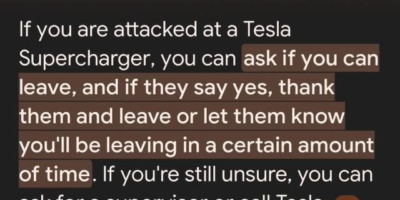In the United States, an executive order is a unilateral order by a President to federal agencies which have the full force of law. Other unilateral orders by Presidents include presidential memoranda (which also have the force of law) and presidential proclamations (which have no legal force behind them). These orders can, and often are, challenged by the courts. Donald Trump has been grabbing headlines for the past few weeks with his executive orders, after years of Conservatives claiming that Obama’s executive orders were illegal. The American government was not always this way, however. Once upon a time, executive orders were extremely rare.
During George Washington’s time in office, he passed very few executive orders. His orders did not exist to defy Congress, but only to address issues where the Congress failed to make a decision. In those days such orders were unannounced and not numbered: they were usually issued to the agencies concerned and only provided to the public later. Two of the sources I used for this article claimed different numbers of orders by Washington: Thomas DiBacco claimed Washington issued 8 in an article for the Washington Post, whereas Brian R. Dirk claimed the number was 4 in his book The Executive Branch of the Federal Government: People, Process and Politics. Washington tried to be prudent because he knew that anything he did had the potential to set a precedent.
Washington’s most important order was probably the very first executive order, issued on 8 June 1789. In those days, the President had very few people or agencies to assist him. This first order told the heads of agencies to “impress me with a full, precise, and distinct general idea of the affairs of the United States.” Another executive order by Washington declared US neutrality during the French Revolutionary War, between Revolutionary France and Great Britain. It would take centuries for American interventionism to become the norm.
Executive orders started being numbered in the 1900s, but the US government took an interesting approach of retroactively numbering a large number of executive orders from the distant past. Executive order number 1 was Abraham Lincoln’s order for a provisional court in Louisiana. This order was followed by several others, including the most impactful US executive order ever: The Emancipation Proclamation, which is considered a presidential proclamation and an executive order.
The Emancipation Proclamation was legally supposed to free all slaves in the Southern States. When the Proclamation was first issued, the government lacked the power to fully enforce it. The practical effect was that slaves that escaped from the Confederate States of America would be considered free if they reached the north. Executive orders require some basis in the powers of the President established in other areas of the law: in the case of the Emancipation Proclamation, the basis was the Presidential authority to prevent rebellions. Legally, the Proclamation was a tool to crush the Confederacy: this is why it only applied to the southern, “rebellious states”. The Proclamation was related to, but distinct from, the 13th Amendment to the US Constitution which abolished slavery and involuntary servitude across the US except as a punishment to a crime. That amendment had to be argued viciously in Congress.
Executive orders continued to be a rarely used tool until the 20th Century, when presidents starting issuing orders in the thousands. The record for highest number of executive orders is currently held by Franklin Delano Roosevelt, who issued 3721 executive orders. Many of his orders were economic measures designed to pull America out of the Great Depression. One of his executive orders declared a bank holiday. Another was used to establish the still-controversial Import-Export Bank. Still another was used to establish the National Labor Relations Board. Roosevelt’s unpopular National Industrial Recovery Act was passed through the Senate and the Congress, but was deemed unconstitutional by the courts. So Roosevelt issued an executive order attempting to protect it, creating a National Emergency Council to administer the functions of the Act. The Council was eventually merged with other organizations to form what we now call the Executive Office of the President of the United States.
In recent years, Obama has come under significant fire for his use of executive orders. In numeric terms, his order count is not very high. Obama issued 277 executive orders during his presidency, or about 35 per year. This is fewer orders per year than any president in the last 120 years. The main reason Obama’s executive actions have been the focus of so much attention is the way Obama used this power: Obama’s executive orders have often served to defy an uncooperative Congress.
After hardly a month in office, Donald Trump already has issued 12 executive orders. In addition to Trump’s stated campaign goals, it has been suggested that the rapid use of executive orders is an attempt to confuse and exhaust Trump’s opposition. How many controversies can we pay full attention to? How many scandalous orders can we rage against before we lose our will for defiance? It looks like Donald Trump will soon find out. He issued executive order 13765 the day he assumed office: this order was to cut down spending on the Affordable Care Act in preparation for its eventual repeal. Executive order 13769 is the extremely controversial order to ban citizens from Iran, Iraq, Libya, Somalia, Syria and Yemen from entering America. Executive order 13771 was the “1 in, 2 out” requirement for agencies to repeal 2 regulations for each one they issue.
As time passes, the American president gains more and more power over “his” government. The number of executive orders per president varies, but each president has the orders of his predecessors to bolster his power. As Congress loses the ability and will to control America, the courts remain the main obstacle to presidential authority. Yet the courts, too, are under attack. “The opinion of this so-called judge, which essentially takes law-enforcement away from our country, is ridiculous and will be overturned!” claimed Donald Trump in a tweet. Yet even if the President had a bit more respect for the separation of powers, the overall trend may well be irreversible. How many voters would vote for a President promising to limit his (or her) own power? How many Presidential candidates would oblige? If Cruz or Clinton or Sanders or Rubio were in office today, they wouldn’t limit their ability to complete their own campaign goals. The future of executive orders looks bright. If only we could say the same for the nation issuing them.




Leave a Reply